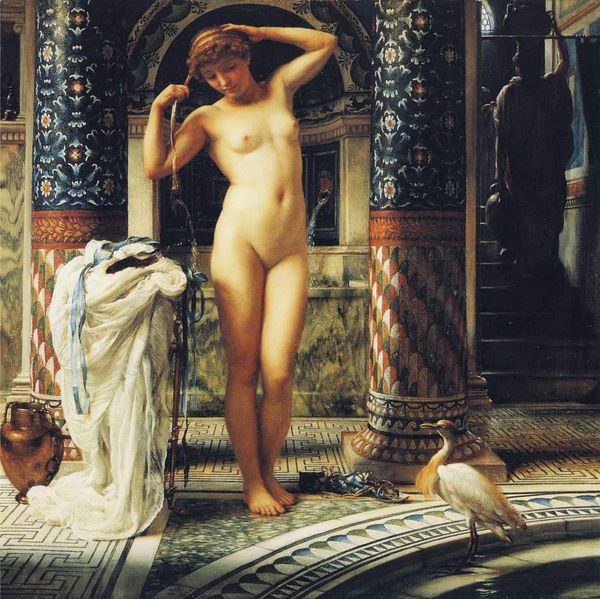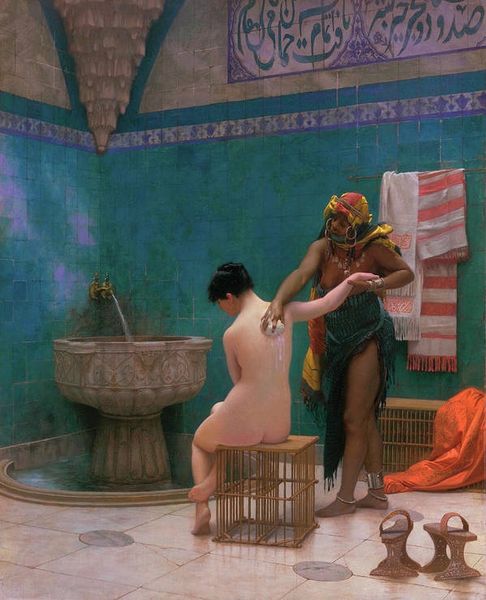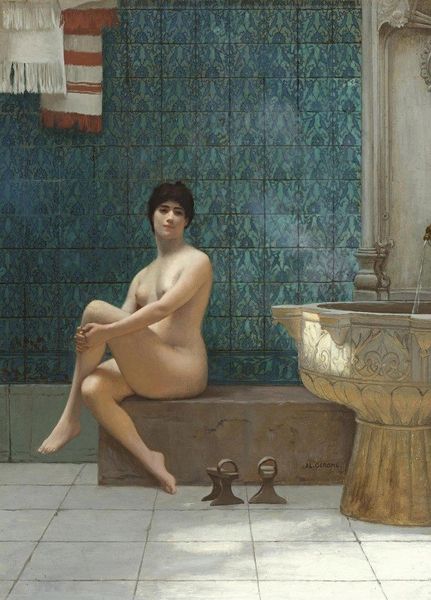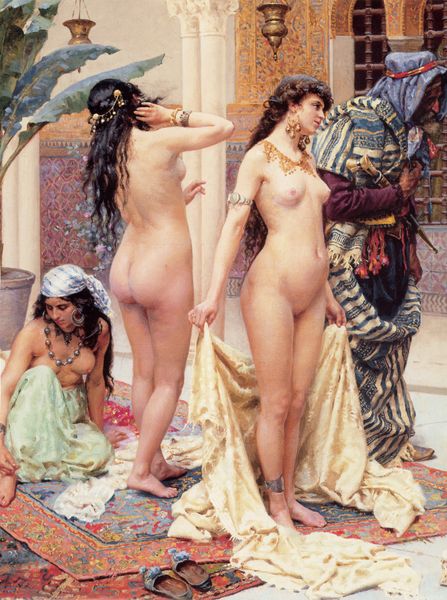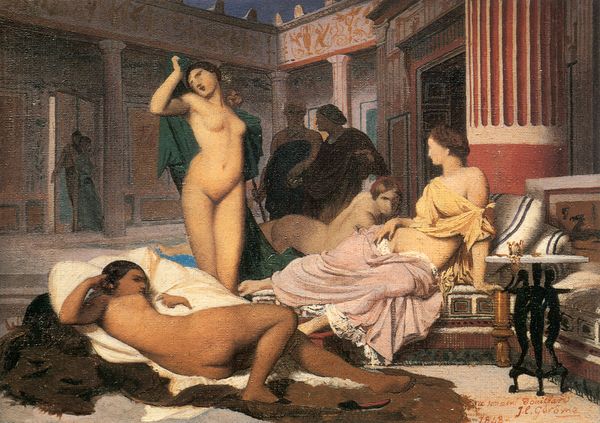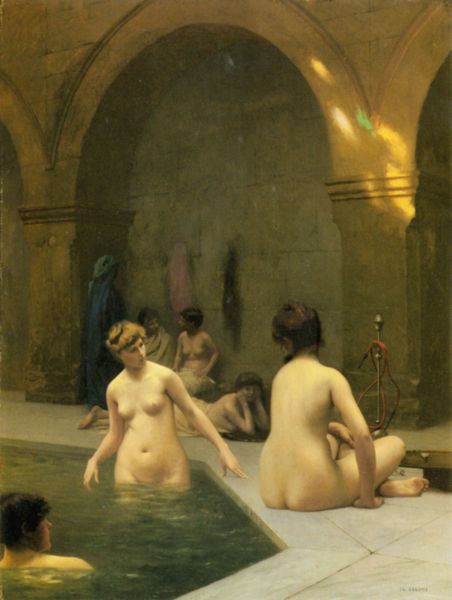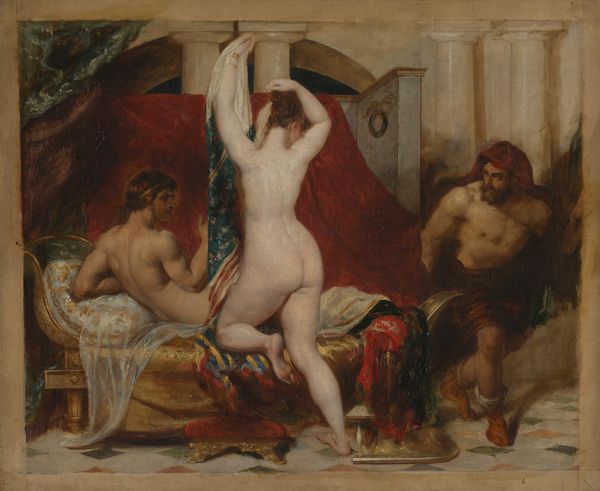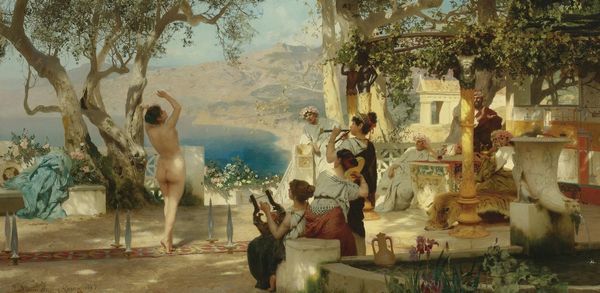
Copyright: Public domain
Editor: Here we have Jean-Léon Gérôme’s "Moorish Bath," an oil painting from 1870. It's hard to ignore the texture in the rendering of the tilework – the visual depth almost feels real. How do you see the materials informing the message here? Curator: Focusing on materials and process reveals how this painting perpetuates a colonial gaze. Gérôme meticulously recreates what he imagines as an "authentic" Moorish bath, fueling a Western fantasy of exoticism and subservience through the labor of the models and the manufacture of pigment. Consider where Gérôme obtained the fabrics shown, and how he consumed them by transforming the textiles into painting. Who is profiting from this exchange of goods? Editor: So, it's not just about the surface representation, but what went into *making* that representation, and the power structures embedded in that production. How does the choice of oil paint contribute? Curator: Oil paint allows for a highly realistic rendering, almost photographic in its detail. This reinforces the illusion of objective truth. But it also obscures the labor involved in both the depicted scene – the overlooked labourer attending to the bathers—and the painting's production. The artist becomes an almost invisible hand. Can you think of other artistic choices that seem to reinforce that point? Editor: I notice that the bright sunlight filtering in emphasizes the contours and textures of the figures, almost objectifying them. I hadn't thought about how the technique actually *hides* so much of the true story, how the consumerist demand for Orientalist works affects marginalized groups. Curator: Exactly. By focusing on materials and methods, we see how "Moorish Bath" participates in a larger system of cultural appropriation and economic exploitation, masking the social and historical realities of its subjects through meticulous technique and the art market. Editor: Wow, I will definitely look at Orientalist paintings with different eyes from now on, seeing them as material records of inequity instead of simple aesthetic impressions. Curator: Indeed, examining the materiality offers a lens to understand the complex interplay of production, consumption, and power within the history of art.
Comments
No comments
Be the first to comment and join the conversation on the ultimate creative platform.

